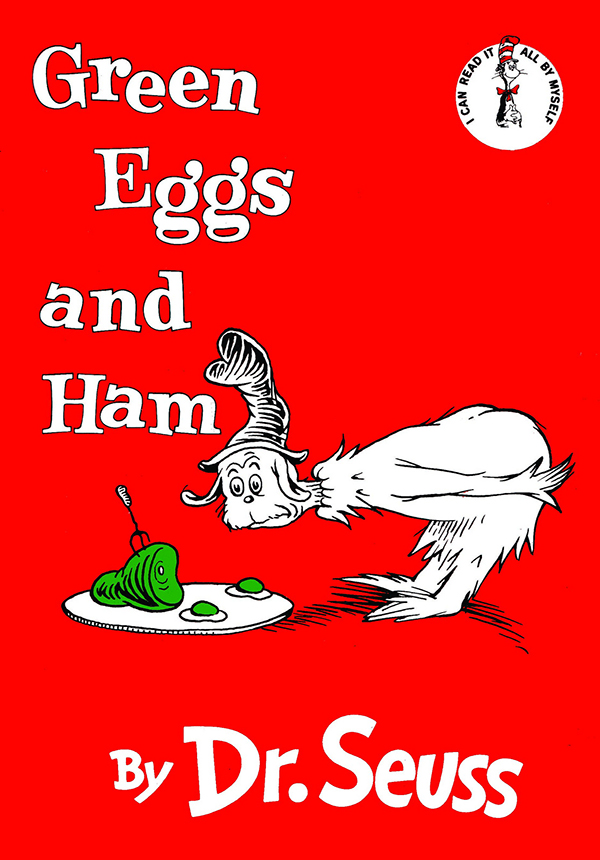Green Eggs and Ham
- 12 Mar 2018
- I remember this book the most because it's the first book that I remember.

I was reminded of this book when Dr Seuss Day came and went. I don’t pay attention to most celebratory days that aren’t holidays, except for Batman Day, but I’ve been thinking about language and literacy a lot. I’m planning to pursue academic study about this topic, actually. I’ve learned that today is the last day of Teacher Appreciation Week in America, so now is a perfect time to recognize a beloved American teacher.
Green Eggs and Ham is Dr Seuss’s best-selling book and it’s my favorite. I remember being 3 or 4 years old and looking at the illustrations while I was in bed at night. I couldn’t read, so I imagined the events that were happening. Looking at those illustrations today instantly takes me back to that time in my life. Now that I can read, I can appreciate the writing as well.
Dr Seuss is famous for his rhymes and this book is no different. He uses rhyming couplets and, remarkably, only 50 unique words. There’s a symmetrical pattern when Sam-I-am asks something and the black-hat character answers. The stanzas don’t have any obvious meter, though, but the lines are short, which makes them suitable for beginning readers. The overall poem has a universal moral: try it before you buy it.
The poem itself is somewhat disappointing to my adult self. It’s supposed to be simplistic, but I wonder how effective it is in other languages because the rhyming is probably hard to replicate, and the rhymes are the engine that move these stories. I think that he’s underrated as an illustrator because I doubt that his writing alone is interesting enough for young kids. My child self definitely appreciated the pictures more than the words.
Regardless, I respect Dr Seuss’s versatility and tenacity. Before he became famous as an author, he was an adman who wrote copy that was apparently well-known during his time. During the Second World War, he was among successful professionals who created propaganda for the American war effort. His first book, And to Think That I Saw It on Mulberry Street, was rejected 27 times before it was published in 1937.
Dr Seuss’s breakthrough happened 20 years later when The Cat in the Hat was published in 1957. A publisher approached him to write a primer following public criticism of kids’ reading levels. The rest is history. His most famous books were published over the next several years when Don Draper, had the man really existed, would’ve been bossing the world of advertising. I don’t recall Dr Seuss being mentioned on Mad Men, which is surprising.
Fortunately, the man used his talents to create things other than ads. He’s motivated generations of kids to read even though he hadn’t been an educator by trade. His work is the sum of its parts: his writing, drawing, and storytelling are better together than they would be on their own. Nonetheless, he made a wide impact on the world because he could make a deep impact on a person. Green Eggs and Ham is proof enough for me.